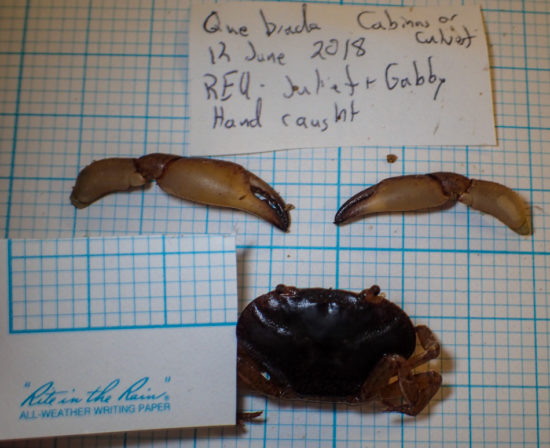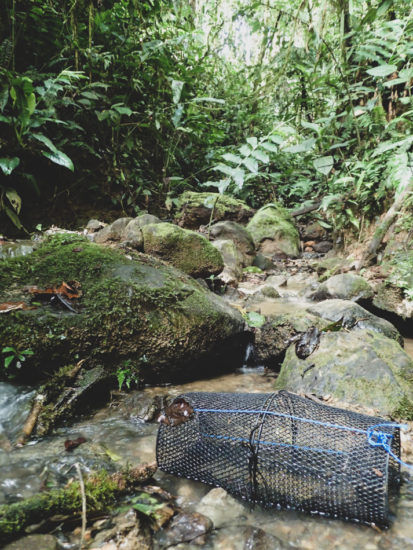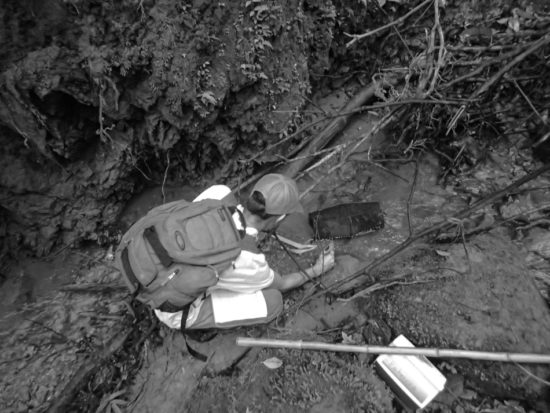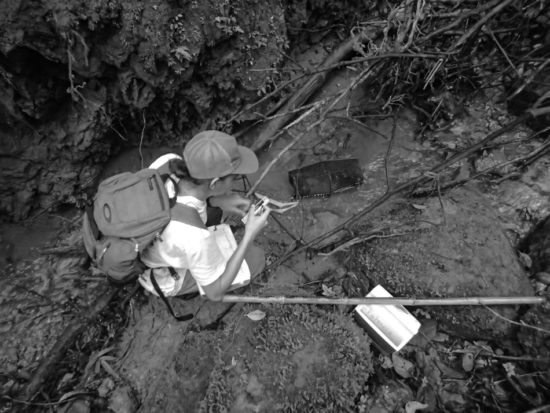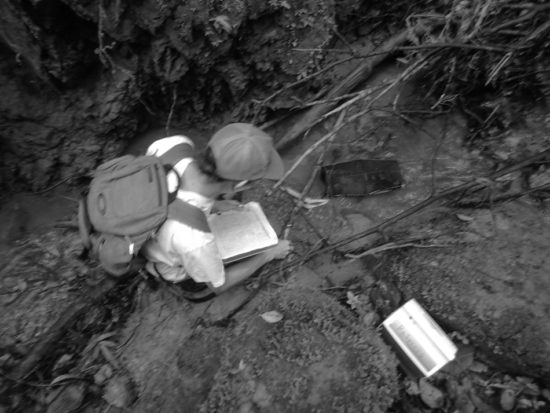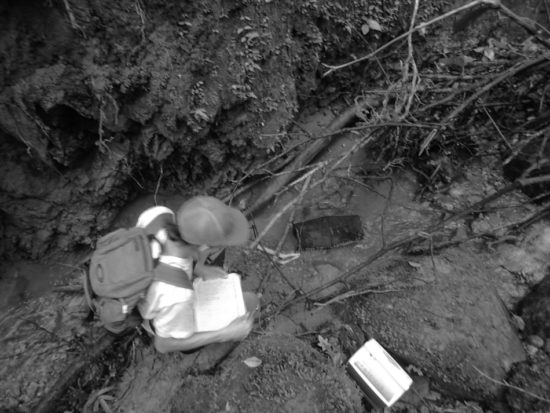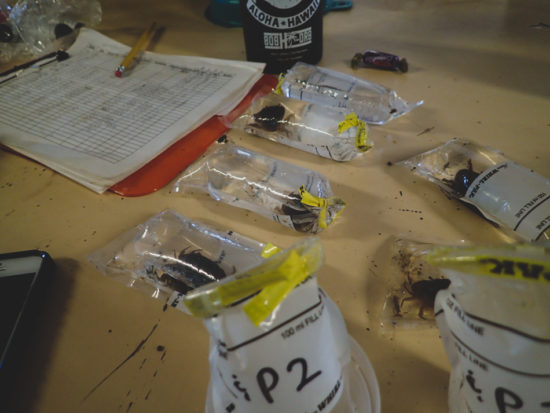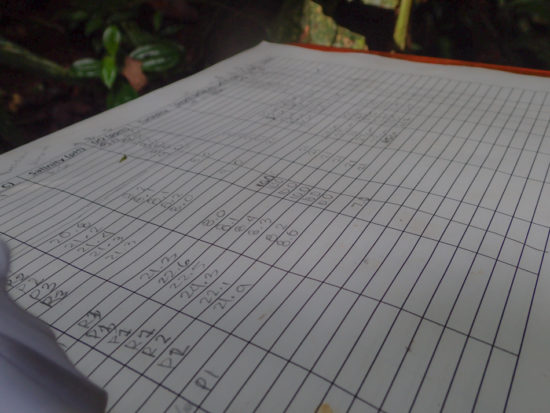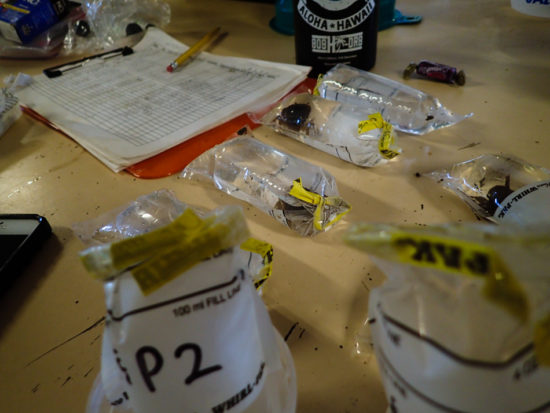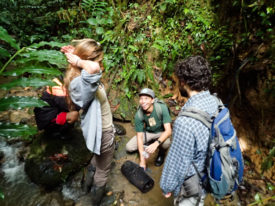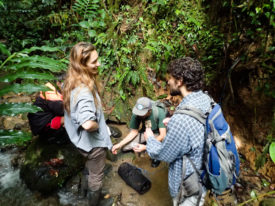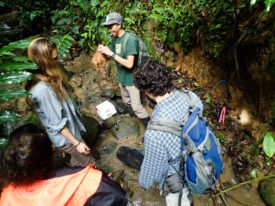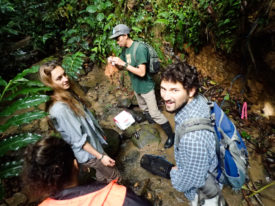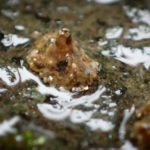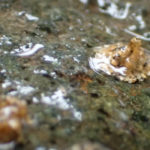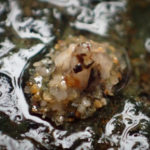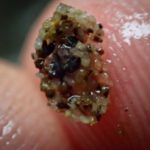There are three students in this year’s LSAMP-OTS REU working with freshwater, pseudothelphusid crabs: Kainalu (Patricia’s student), Gabby, and Juliet.
Kainalu’s focus: population structure and habitat preferences of the crabs. He’s been using minnow traps to collect crabs from riffles and pools of several streams so far, including Río Java, Quebrada Culvert, and Quebrada Culebra.
Juliet and Gabby, my students, have related questions, so we’ve been keeping the crabs Kainalu has collected and bringing them into the lab.
Juliet is documenting the presence and prevalence of trematode worms (Paragonimus sp.) parasitizing the crabs. There are two known species of trematode to occur in Costa Rican freshwater crabs—P. mexicanus, which can cause paragonimiasis in humans, and P. caliensis (Hernández-Chea et al 2017). While various crab host species have been identified in Costa Rica, including those in genus Ptychophallus and Allacanthos, there doesn’t appear to be good literature identifying the specific species at Las Cruces as hosts—Ptychophallus paraxanthusi and Allacanthos pittieri.
We’ve already found some metacercariae in the hepatopancreas of both crab species here already, and Juliet’s exploring how stream characteristics, carapace length, and sex may impact the parasitization, so she has worked with Kainalu on most field collections.
As Juliet and Kainalu bring in crabs, Gabby has been sorting, helping to measure them, and caring for them in individual containers as she prepares assessing sex-dependent, and claw-dependent agonistic behaviors. While agonistic behaviors are well documented in decapods, these behaviors are often species-specific, and there doesn’t seem to be much literature on Pseudothelphusid behavior. One of the other cool ideas she’s exploring—how does handedness affect behavioral outcomes? These crabs, along with many others, have asymmetrical chelae (claws) and some new research (according to Patricia) suggest different outcomes for bouts when the asymmetry is matched (both crabs have their right chelae larger than the other) versus when the asymmetry differs between crabs (one crab has the right chelae larger, the other has the left).
